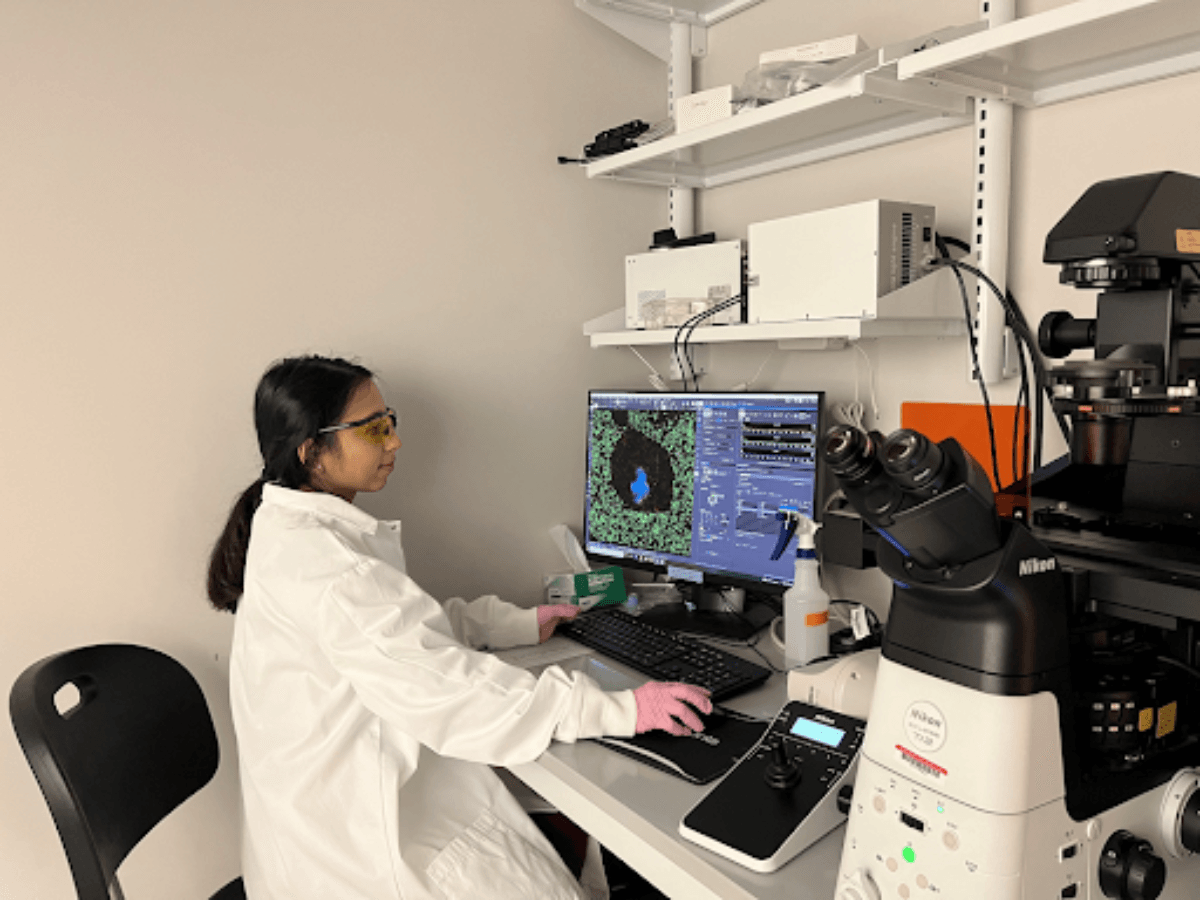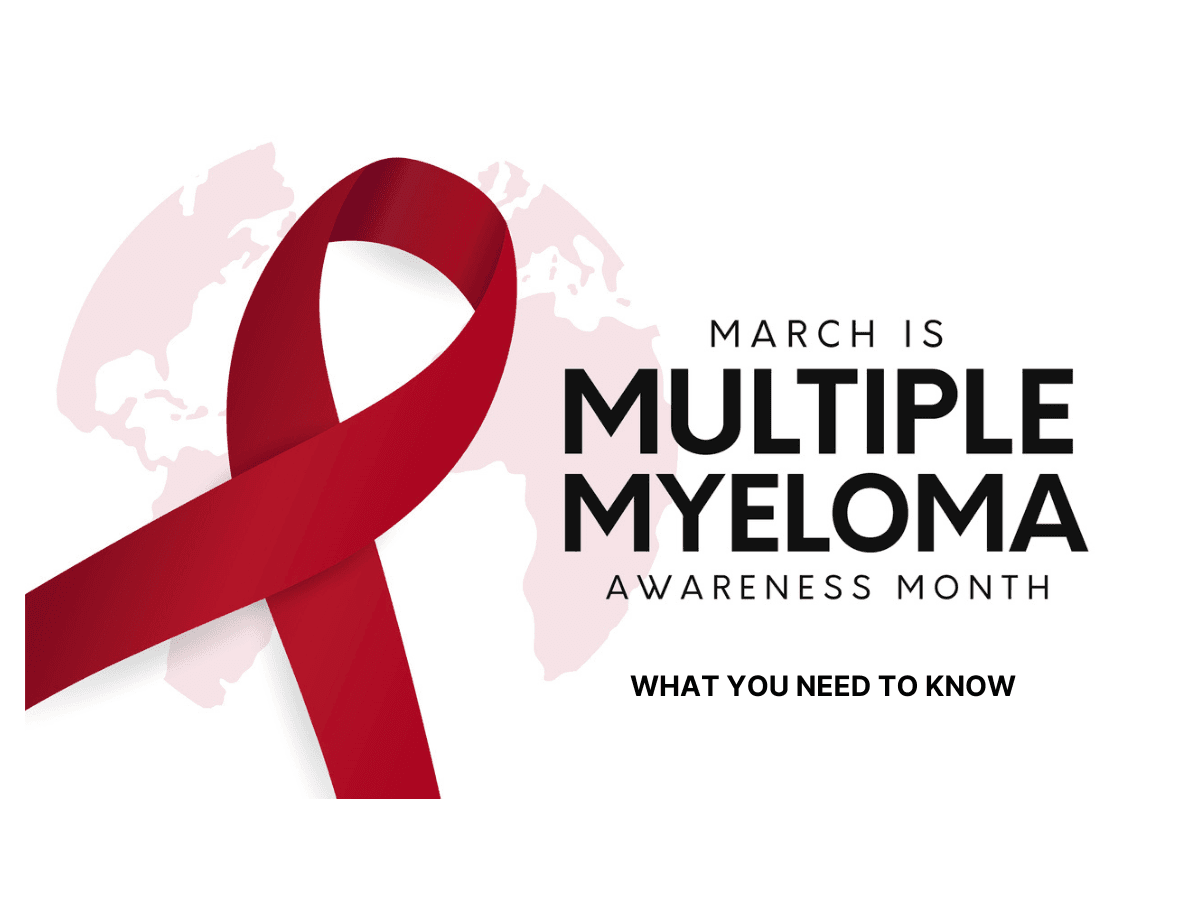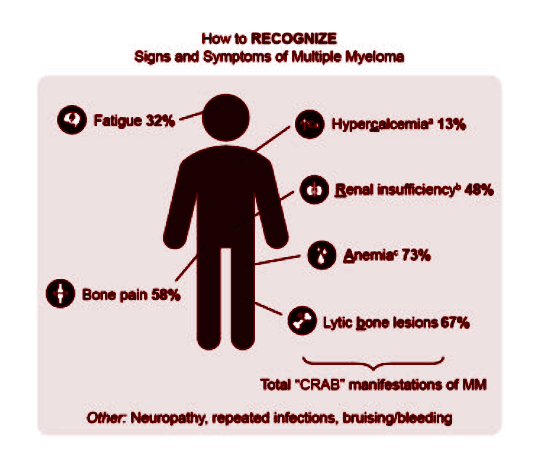
The Cancer News
AN AUTHORITATIVE RESOURCE FOR EVERYTHING ABOUT CANCER
March is Multiple Myeloma Awareness Month What You Need to Know

Introduction
Every March, patients, caregivers, healthcare providers, and supporters come together to raise awareness about the lesser-known form of blood cancer. During this month, the global myeloma community shares personal stories and engages with the public to inspire action. This year’s campaign, #Myelomamilestone, represents the progress, resilience, and hope that patients encounter in their battle with myeloma.
What is Multiple Myeloma
Multiple Myeloma, sometimes called just myeloma, is a cancer that affects plasma cells in the blood. Plasma cells are B-cells that produce antibodies and are found in the bone marrow. These cells are important for antibody-mediated immunity. The development of myeloma is characterized by uncontrolled growth of plasma cells, leading to the production of monoclonal antibodies and eventual failure of major organs in the body. During the course of unregulated antibody production, damage is done to the bone marrow, resulting in an array of abnormal conditions. This includes cytopenia, brittle bones, renal failure, pain, fractures, calcinosis, and mobility issues. The acronym CRAB ( hypercalcemia, renal involvement, anemia, and bone lesions) is used to refer to the signs that make up end-organ damage.
Expert Insights on Multiple Myeloma Therapy
In our interview with Dr. Christopher D’Angelo, an oncologist at the University of Nebraska Medical Center who treats several blood cancers, including multiple myeloma, he offered his perspective on the current state of the therapeutic landscape in myeloma. He stated, “CAR T cell therapy is one of the most effective single-agent treatments for multiple myeloma, though the field is still evolving. While multiple myeloma is not currently curable, it is a controllable disease, and early consideration of cell therapy options, including stem cell transplants and CAR T cell therapy, can benefit patients. Additionally, improving pain management and recognizing unexplained back pain as a potential early sign of multiple myeloma may aid in earlier diagnosis.”
To educate local healthcare providers about the latest updates in hematologic malignancies, including multiple myeloma, Dr. D’Angelo will be chairing one of our conferences taking place in Omaha, Nebraska, on April 12. The Nebraska Congress on Hematologic Malignancies is a CME-accredited event that will discuss the recent advances in blood cancers and cellular therapy, with a focus on integrating emerging treatments into clinical practice.
Epidemiology of Multiple Myeloma
Multiple Myeloma is the second most common blood cancer in the United States. Its incidence is also rising worldwide. According to the GLOBOCAN database, an estimated 188,000 myeloma cases and 121,000 deaths were reported in 2022. Eastern Asia and Northern America each makeup about a fifth of all cases (21% and 19%, respectively), followed by South-Central Asia (11%) and Western Europe (9%). Multiple myeloma is more common in men than women, but the regional trends are similar. The highest incidence rates are in North America and Australia/New Zealand, with greater than 4 cases per 100,000 people. Similarly, the highest death rates (1.8 per 100,000) are seen in Australia/New Zealand, Northern Europe, and Southern Africa. Researchers speculate that without intervention, multiple myeloma cases and deaths may rise sharply, by 71% and 79%, respectively, by 2045 compared to 2022. As reported in another study, this projection may stem from the growing aging population and patients living longer due to modern medications.
Symptoms and warning signs of Multiple Myeloma
Patients can experience a wide range of symptoms before diagnosis. Some of these symptoms include pain, fatigue, constipation, numbness, sadness, depression, disturbed sleep, pain, and dry mouth. Delayed diagnosis is common and can negatively affect the management of myeloma in patients. To understand possible warning signs of myeloma development, a 2020 prospective study evaluated 295 myeloma patients at Freiburg University Medical Center in Germany for symptom onset and time to diagnosis. The study reported that before diagnosis, myeloma patients commonly experienced back pain, hip or pelvic pain, rib or thorax pain, femur pain, joint pain, and humerus pain, with back pain often localized to the thoracic or lumbar regions. Other symptoms included fatigue, anemia-related issues such as shortness of breath and paleness, night sweats, weight loss, and fever. The median time from the onset of first symptoms to a patient's first doctor visit was 2 months, while the median time from the first doctor’s visit to final diagnosis was 6 months. This study highlights the need for heightened awareness of warning signs for patients and the use of an interdisciplinary approach for healthcare providers to reduce the time from symptom onset to diagnosis.
 Adapted from (Mikhael et al., 2023)
Adapted from (Mikhael et al., 2023)
What are the treatment options for Multiple Myeloma?
Although multiple myeloma treatments are not functionally curative, they have significantly improved. In the United States, the 5-year survival rate for myeloma stands at 62%. Once diagnosed, treatment for myeloma occurs in stages. First, induction therapy is administered, which involves using several drugs to achieve a deep response. This is followed by consolidation therapy to reduce the disease burden. Then, maintenance or extended therapy is used to sustain remission and prevent relapse. Drugs used at different stages of treatment will vary depending on the patient’s profile. In addition, supportive care, such as pain management, infection prevention, and other symptom management, is given to achieve deep response while minimizing treatment-related toxicities. Examples of the treatment categories include proteasome inhibitors, immunomodulatory drugs, monoclonal antibodies, and high-dose chemotherapy followed by hematopoietic stem cell transplantation.
Multiple Myeloma Disparities: Who Is Most Affected?
In the United States, multiple myeloma disproportionately affects men, people aged 65-74 years, and Black/African American populations. The rate of new cases is over 2 times higher among Blacks/African Americans than Whites, and it is the most common hematologic cancer among Blacks/African Americans. Despite comprising only 14.2% of the total US population, it is estimated that Blacks/African Americans will make up about 24% of newly diagnosed multiple myeloma cases by 2034.
Disparities in multiple myeloma care remain a critical issue, particularly in underserved regions like the Delta South. To date, clinical trials have lacked adequate representation of minority and socioeconomically disadvantaged populations, which affects how well treatments can be tailored to these groups. As Dr. Muhamed Baljevic, the director of plasma cell disorders research at Vanderbilt-Ingram Cancer Center and chair of our Case-Based Insights on Hematologic Malignancies conference, explains:
"In myeloma, this is actually a very important focus, because we have not done such a great job historically over the decades of ensuring that there is equitable representation of minority and underserved populations in clinical trials. So we can use the data appropriately, and, you know, extrapolate it to these patient populations."
Conclusion
Multiple myeloma affects more than 176,404 people worldwide each year. Behind every statistic are individuals with dreams and loved ones. So it is essential to actively participate in reducing the impact of this disease on patients and their families. The #myelomamilestone campaign celebrates more than just treatment victories; it honors the entirety of patients’ journeys. This could include milestones like graduation, learning new skills, or trying unique recipes. Every moment, whether big or small, deserves celebration. When patients share their stories and milestones, it ignites hope and brings comfort. It shows that no one is alone in their battle against multiple myeloma. Together, we can reduce the negative impact of myeloma on the lives of patients and caregivers.
To learn how to help raise awareness this month, visit the Myeloma Action Month page for more information.
Works discussed
- Allini Mafra, M., Laversanne, M., Marcos-Gragera, R., Chaves, H. V. S., McShane, C., Bray, F., & Znaor, A. (2024). The global multiple myeloma incidence and mortality burden in 2022 and predictions for 2045. JNCI: Journal of the National Cancer Institute, 2024, djae321. https://doi.org/10.1093/jnci/djae321
- Herget, G. W., Kälberer, F., Ihorst, G., Graziani, G., Klein, L., Rassner, M., Gehler, C., Jung, J., Schmal, H., Wäsch, R., & Engelhardt, M. (2021). Interdisciplinary approach to multiple myeloma - time to diagnosis and warning signs. Leukemia & lymphoma, 62(4), 891–898. https://doi.org/10.1080/10428194.2020.1849681
- Padala, S. A., Barsouk, A., Barsouk, A., Rawla, P., Vakiti, A., Kolhe, R., Kota, V., & Ajebo, G. H. (2021). Epidemiology, Staging, and Management of Multiple Myeloma. Medical Sciences, 9(1), 3. https://doi.org/10.3390/medsci9010003
- Suzuki, N., Okuyama, T., Akechi, T., Kusumoto, S., Ri, M., Inagaki, A., Kayukawa, S., Yano, H., Yoshida, T., Shiraga, K., Hashimoto, H., Aiki, S., & Iida, S. (2022). Symptoms and health-related quality of life in patients with newly diagnosed multiple myeloma: A multicenter prospective cohort study. Japanese Journal of Clinical Oncology, 52(2), 163–169. https://doi.org/10.1093/jjco/hyab178





